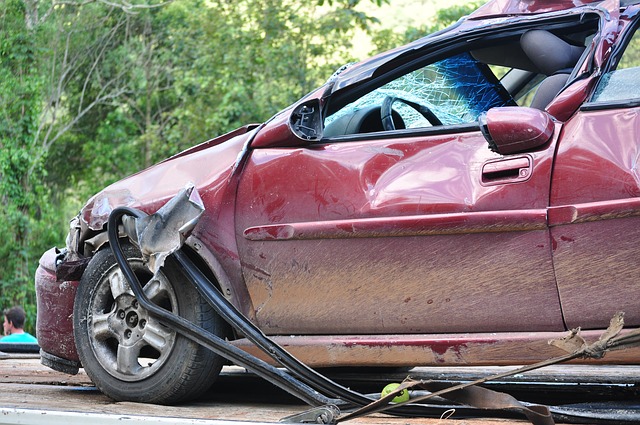Car crashes leave more than ER bills, they trigger months of appointments, missed work, and paperwork that quietly drains families. Nationally, the economic cost of crashes reached $340 billion in 2019, much of it borne by people not directly involved; medical and work-loss burdens ripple through communities.
This article explains the “hidden bill,” then compares Maryland and Florida to show how state rules shape what victims actually take home.
You’ll see what typically goes into a settlement, why documentation matters, and how frameworks differ, grounded in neutral consumer and public-health sources.
The “Hidden Costs” Families Face After a Crash
Traffic accidents ripple beyond the crash, you’re often left juggling medical bills, missed paychecks, and long-lasting paperwork. This section outlines what typically goes into a settlement, compares Maryland and Florida laws, and provides data context to frame the scale of the challenge.
What typically goes into a settlement in Maryland
Use car accident settlement process in Maryland to access state guidance. Settlements frequently include:
- Medical expenses (past & future treatments)
- Wage loss or reduced earning capacity
- Non-economic losses, like pain and suffering, supported by documentation
- Personal Injury Protection (PIP): Maryland mandates a minimum of $2,500, offering coverage for three years post-accident, but you must file within 12 months or lose eligibility.
Florida’s ripple effects (similarities and key differences)
Florida differs in two key areas:
- Negligence standard: MD uses contributory negligence (any fault bars recovery); FL now follows modified comparative negligence (51% bar), fault above that percentage precludes any compensation.
- PIP coverage levels: FL’s PIP payouts are generally higher and mandatory, impacting early claim workflows.
Data snapshot (why “hidden costs” matter)
Traffic crashes cost the U.S. $340?billion in 2019, over 1.6% of GDP, covering medical treatment, lost productivity, and long?term recovery. Framing these costs shows why documentation and policy literacy are vital.
How the Legal Framework Changes the Math
In this section, we explore how state laws affect settlement outcomes, not just dollar amounts, but how much reach, clarity, and timing the documentation process ultimately requires.
What really shapes the number
Key legal variables determine family recovery:
- Negligence standards – Maryland’s contributory negligence (even 1% fault bars recovery) vs. Florida’s modified comparative negligence (51% bar), where the award is reduced by the plaintiff’s percentage of fault but barred entirely if that fault exceeds 50%.
- PIP/No-fault thresholds – Florida mandates PIP that pays 80% of medical expenses and typically 60% of lost wages (up to $10,000) regardless of fault.
- Policy limits and documentation clarity – Limits dictate ceilings; without precise records (medical logs, billing, work loss documentation), negotiating full coverage and damages becomes more difficult.
Florida focus: components & process overview
In Florida, the calculation relies on structured benefits and thresholds. At state-disclosed volume, one can explore how medical expenses, wage loss, and non-economic damage are measured under a car accident settlement in Florida, clarifying the interaction between statutory PIP and liability claims. This helps set expectations for timing, scope, and documentation that aligns with settlement estimates.
Documentation that travels well
Strong documentation drives consistency across courts and insurers:
- Time-stamped medical records
- Clear bills, itemized care costs
- Work loss details and wage statements
A well-organized package reduces delays and improves chances for accurate, fair compensation.
After the Settlement: Taxes, Liens, and Long-Term Planning
Even after a settlement is reached, recipients often face additional financial and legal hurdles: insurer subrogation, long-tail recovery costs, and nuanced tax implications. This section breaks down what to watch next, and how to plan.
Health-insurer subrogation & medical liens
A Maryland statute (CJ §?11?112) entitles health insurers to subrogation from your settlement, but they must reduce their lien proportionally if you had legal representation and didn’t intervene. The lien may be reduced by:
- Division of total recovery by attorney fee portion,
- Multiplying that ratio by the subrogation claim, capped at one-third. Neglecting this could delay access to funds or incur disputes.
Budgeting for recovery: rehab, mental health, time off work
A car accident’s financial impact can stick around long after the hospital visit. To protect your recovery, budget for:
- Physical therapy, often costing $75–$350 per session, depending on insurance and region.
- Mental health counseling, which can range from $500–$1,500 total, depending on coverage and treatment intensity.
- Lost wages, especially if therapy or care requires time away from work.
Factoring in these expenses upfront helps preserve resources and supports smoother long-term recovery.
Maryland taxes & paperwork you shouldn’t ignore
For federal tax implications, see car accident settlement taxes (IRS guidance). Key points under IRC §?104(a)(2):
- Non-taxable: Damages tied to physical injuries or sickness, including related emotional distress.
- Taxable: Lost wages, punitive awards, interest, or non-physical injury compensations. Properly itemizing settlement components (e.g. allocable to injury vs. wages) helps avoid surprises at tax time.
Conclusion: What Maryland Readers Should Take Away
Settlements often mask lingering costs, medical bills, liens, taxes, that can erode financial recovery. Knowing how to document claims properly, handle lender and insurer subrogation, and plan for taxes using neutral resources equips families to protect both their healing and their security.







Recent Comments